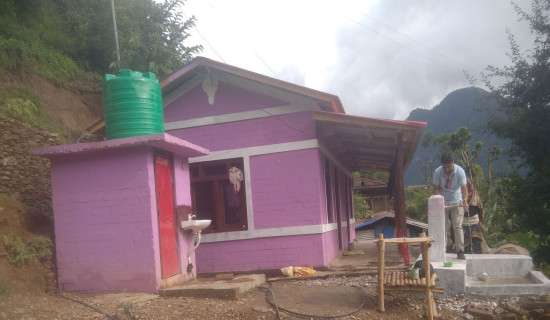- Tuesday, 22 July 2025
Nepali Mad Honey Gaining Popularity
Sudip Dhungana
In the heart of the Himalayas, a hidden treasure is causing a stir among adventurers, thrill-seekers, and those in search of alternative remedies. Nepal’s mad honey, a rare and distinctive product, has been quietly gaining international attention, commanding an unmatchable demand on the black market. Despite its psychoactive effects and associated risks, this natural elixir continues to captivate people’s curiosity and thirst for exploration.
With per kilogramme prices ranging from more than $60 to $80 on the black market, Nepali wild honey has become a sought-after commodity, alluring those who are willing to take the risk. However, its consumption is not without danger.
The honey is known to induce hallucinations, slow heart rates, cause temporary paralysis, and even lead to unconsciousness or death in extreme cases. Remarkably, its reputation as a potent substance is such that it has been deemed illegal in certain nations, often treated on par with controlled substances.
This unique honey is produced by the world’s largest bees, wild bees that inhabit the lofty peaks of mountains in Nepal. They gather nectar from the pollen of rhododendron flowers, converting it into a honeycomb dripping with psychedelic properties. Beyond its mind-altering effects, the mad honey is believed to possess medicinal qualities, with claims of aiding conditions such as gastritis, hypertension, and diabetes. Some even refer to it as the “love drug,” touting its potential as a natural remedy for erectile dysfunction.
In the global market, Nepal’s wild honey is making its way into the hands of curious consumers. Online platforms like themadhoney.net and bestmadhoney.com have emerged as popular hubs for branding and selling this extraordinary honey worldwide. Prices on these platforms vary, with themadhoney.net offering 200 grams for $164, while bestmadhoney.com tags 220 grams at $399. The price discrepancies are attributed to factors such as the honey’s redness and quality, both of which significantly influence its potency and desirability.
Located above 3,500 metres above sea level, the prime harvesting regions for mad honey are Kaski and Lamjung in Nepal. Traditionally, the Gurung community has been involved in the production of this honey, passing down their expertise through generations. Today, the popularity of mad honey has given rise to honey tours, treks, camping experiences, and bee-themed tourism, captivating the attention of international vloggers and adventure enthusiasts. The same tradition, now as business module, is adding the earnings, making better standard of living.
Despite its growing allure, the local media and social networks in Nepal remain relatively silent about this unique product. Nevertheless, the demand for the Nepali mad honey remains significant, with large quantities being exported, although the exact figures are unknown. To ensure the sustainability of this industry, it is crucial for the government to focus on conserving the environmental, promoting cottage industries, investing in refinery technology, and facilitating exports.
As the buzz around this unique product continues to spread, it is essential to strike a delicate balance between tapping into its economic potential and addressing the associated risks. While the allure of this rare honey is undeniable, caution must be exercised to ensure the safety and well-being of those who choose to indulge in its potent effects.

















